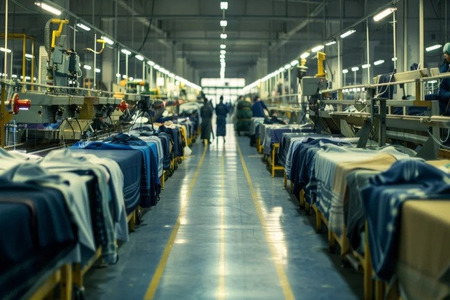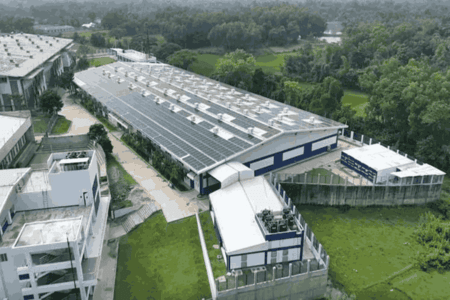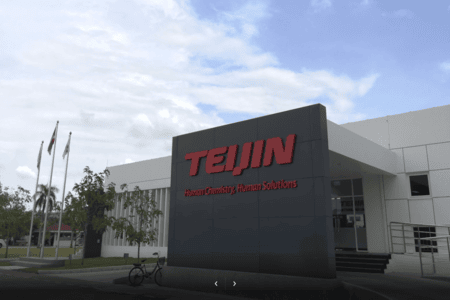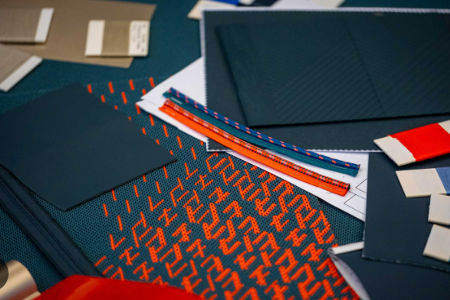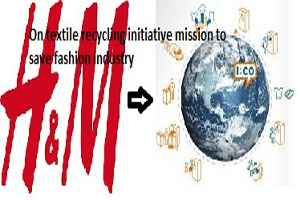
H&M on textile recycling initiative mission to save fashion industry
YarnsandFibers News Bureau 2016-06-09 12:00:00 – StockholmMajor fashion retailer H&M is on a mission to save fashion from ending up in landfills, and its closed-loop textile recycling initiative with I:CO is the first step in doing so. As the fashion industry is said to be the second dirtiest industry in the world, second only to big oil.
Most of them think of pollution, think of auto exhaust, factories, or power plants — not clothing. In fact, cotton production is plagued by environmental and social issues. The scale of the issue is immense, with 150 million tons of clothing are sold worldwide every year, with the majority ending up in landfills. Cotton must be cultivated, traded, dyed, sewn, and shipped before it ends up on our backs — each with its associated pollution and potential social consequences.
Cotton is a demanding crop which can require 20,000 liters of water to produce just one t-shirt or pair of jeans. Most cotton is grown on irrigated land to satiate the needs of this thirsty crop, which can threaten water security in some areas. Although a mere 2.4% of cropland cultivates cotton, it accounts for 24% and 11% of the world’s pesticide and insecticide use respectively. In addition, the dying process is both energy and very chemically intensive. Discharge water contaminated with chemicals from the dying produces threatens waterways and fresh water supplies. To top it off, the garment industry in general is tremendously wasteful, as most clothing is not recycled and rather ends up in landfills. So many resources go into clothing with only one life.
H&M has partnered with I:CO (short for I Collect) in this closed-loop textile recycling initiative for clothes and shoes to be made into new products, much as Mother Nature does. I:CO’s mission is to reduce waste, preserve natural resources, and protect the environment.
A strong collection infrastructure is important for this textile recycling model to thrive and I:CO is establishing that. It has created an in-store take-back initiative with 60 retail partners across six continents.
H&M partnered with I:CO back in 2013 and has collected more than 25,000 tons of garments to date globally — garments representing both H&M and non-H&M brands. The list of retail partners continues to expand, with several large announcements in 2016.
I:CO has an innovative process for sorting items for reuse and textile recycling. Along with its partners, I:CO collected around 17,000 tons of clothing and shoes in 2015. Roughly 40 percent of this clothing was recycled (6.8 tons or almost 15 million pounds) — with a large amount being used to make new cotton garments.
I:CO looks for the best use for collected items, ideally upcycling clothes and shoes. Items that are reusable can be worn again, which is has the least environmental impact and makes the best use of the materials in the garment.
I:CO strives to upcycle clothing, thus making the discarded textiles or shoes into a new product of equal or better quality. Garments that can no longer be worn go into the closed-loop recycling process, thus a shirt can be turned into a new shirt in the future. By contrast, downcycling clothing would entail shredding it and turning it into a new product, such as home insulation.
Back in February 2014, H&M unveiled its first line of products made of recycled textile fibers from clothing collected in its garment recycling initiative. The recycled cotton clothing line includes five denim items, including jeans and jackets, for both men and women. Last year, H&M introduced 16 more denim items and has goals for increasing the use of 20% recycled cotton in its clothing by 300% over 2014 numbers.
Such efforts help push what is technologically possible in recycling cotton. Despite making big strides in closed-loop recycling initiatives, H&M is also encountering technological limitations.
Karl-Johan Persson, CEO of H&M said that creating a closed loop for textiles, in which unwanted clothes can be recycled into new ones, will not only minimize textile waste, but also significantly reduce the need for virgin resources as well as other impacts fashion has on the planet.
As much as 95 percent of textiles and clothes that are thrown away globally can be used again.
Market Intelligence
Ask for free sample Report

experience
Customer Base
dedicated team
Countries Served Worldwide




